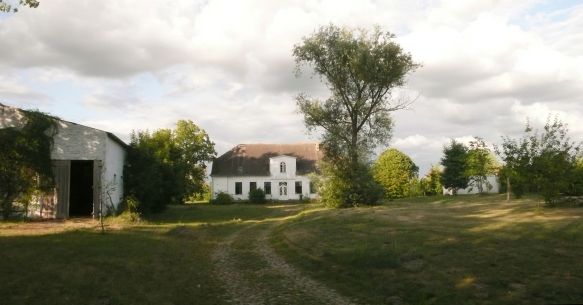
Das Nossendorf-Projekt – An Installation by Hans Jürgen Syberberg
13.11. – 8.12.10
Exhibition
Bereits in der sogenannten »Deutschen Trilogie« – seinen in den 1970er-Jahren entstandenen Filmen über Ludwig II., Karl May und Hitler – setzte sich Hans Jürgen Syberberg intensiv mit der deutschen Geschichte auseinander. Mit den von Edith Clever gesprochenen filmischen Monologen Die Nacht (1984/85) und Ein Traum, was sonst? (1991/94) fügte er diesem Themenfeld die Perspektive einer persönlichen Erinnerungs- und Trauerarbeit hinzu. In beiden Filmen überlagern sich Fragmente des kollektiven und des individuellen Gedächtnisses. Zitate von Goethe, Hölderlin und Kleist werden mit Syberbergs Erinnerungen an das Elternhaus seiner Kindheit in Nossendorf (Vorpommern) verschränkt. Ist Die Nacht von einer romantisch verklärten Melancholie und Leichtigkeit bestimmt,
As early as the 1970s, Hans Jürgen Syberberg had intensively confronted German history in his so-called “German Trilogy” – films he made about Ludwig II, Karl May and Hitler. In Die Nacht (1984–85) and Ein Traum, was sonst? (1991–94), cinematic monologues performed by Edith Clever, he added the perspective of personal memories and mourning to this range of subjects. Fragments of the collective and of individual memory overlap in both films. Quotations by Goethe, Hölderlin and Kleist are interspersed with Syberberg’s memories of his childhood parental home in Nossendorf (Western Pomerania). If Die Nacht is determined by a romantically transfigured melancholy and lightness, Ein Traum, was sonst? is dominated by grief and pain in a landscape of ruins inhabited by ghosts.
Following the fall of the Berlin Wall in 1989, the country of Syberberg’s childhood became accessible once again. His film Gang durch das Haus (2000) grounds us in reality. Syberberg roams through his parent’s estate after more than 50 years, documenting the traces of time and the vandalism of the past years. In full knowledge that a reconstruction can only ever be a transformation, he has worked on redefining his birthplace since then. Four webcams and an online diary document the daily progress. In his “Projekt Nossendorf,” Hans Jürgen Syberberg raises questions about identity and native homeland, providing space for loss and sorrow, myths and virtualities.
Hans Jürgen Syberberg recently received the Landesdenkmalpreis (historic preservation award) of Mecklenburg-Western Pomerania for his faithful restoration of the Nossendorf estate.
Further information on the Nossendorf-Projekt: www.syberberg.de
In cooperation with the Zeughauskino at the Deutsches Historisches Museum.